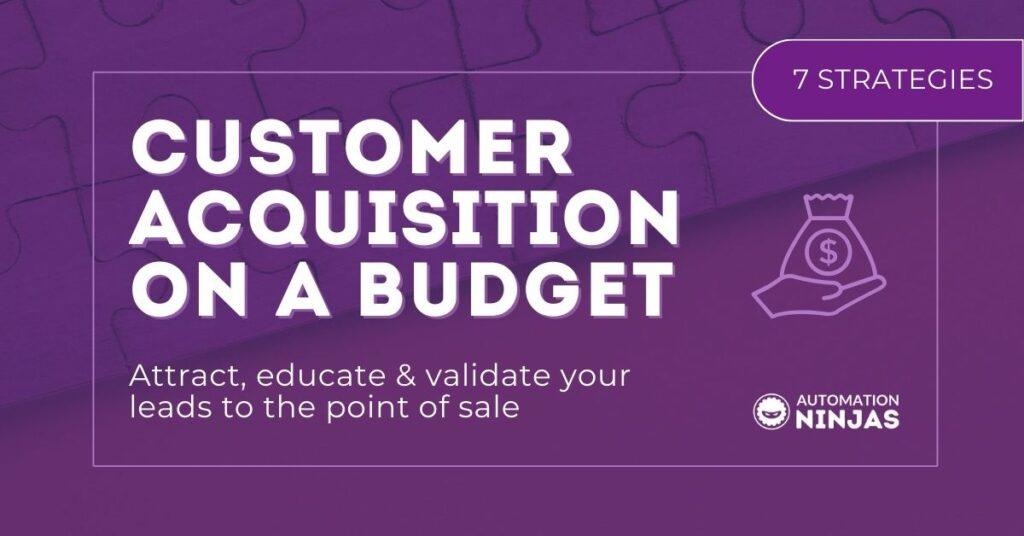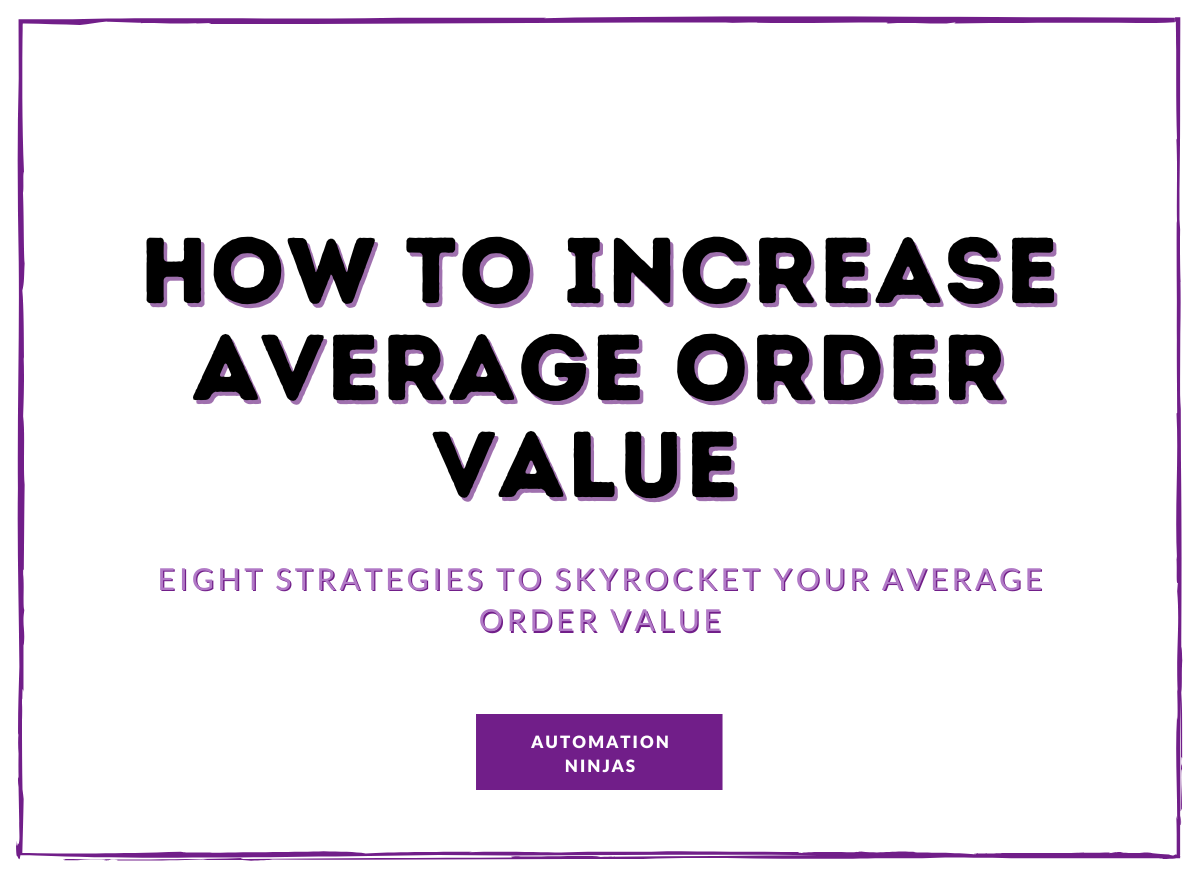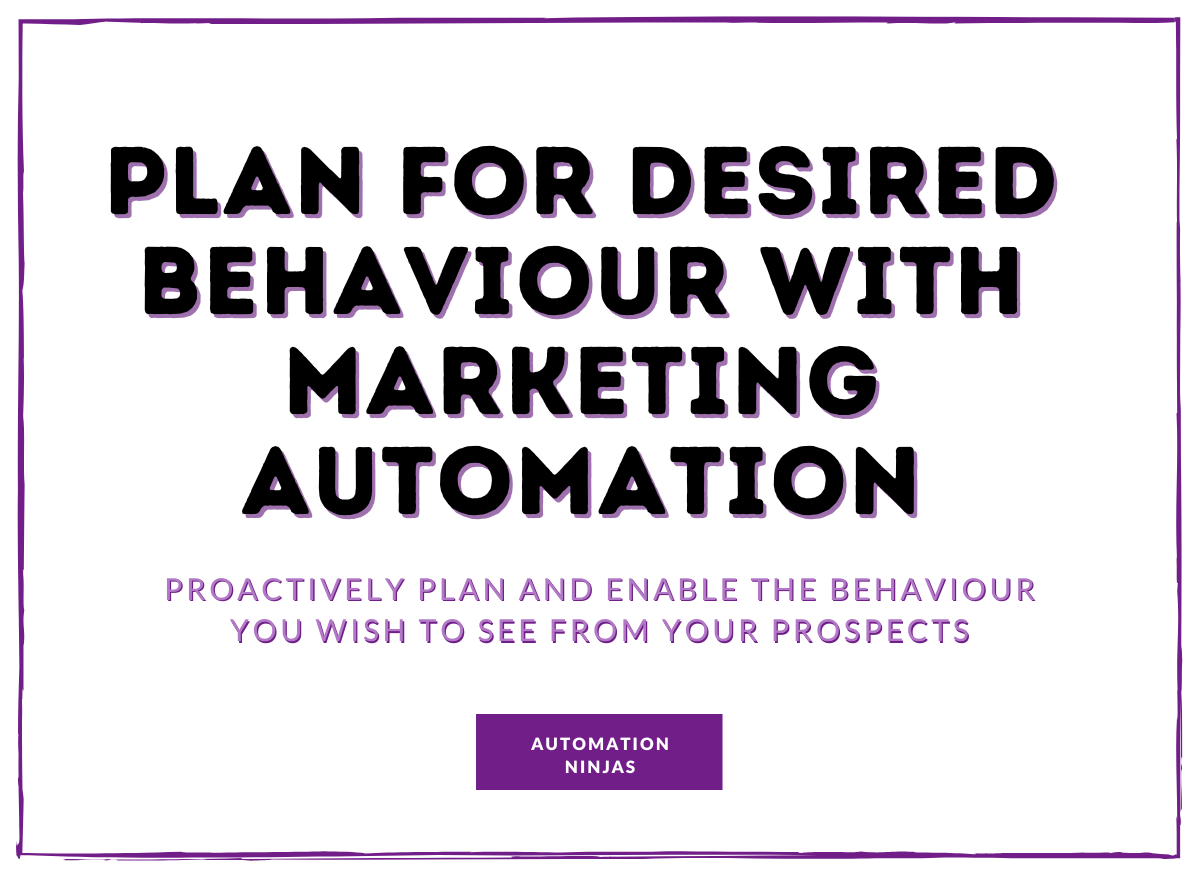If customer acquisition is the topic, there are many things to consider and discuss.
Customer acquisition isn’t just how you can get your customers to buy (and hopefully continue buying) your products. It’s about all the steps you must take to get them to that point.
Now, framing it like that might sound a little overwhelming.
Customer acquisition is about the strategies you will employ to take your leads to customers while moving them through the stages of awareness to ensure that when it comes time to press pay or sign the dotted line, they feel comfortable and happy enough to do so.
In this blog, we’re going to go on a deep dive into the seas of customer acquisition.
We’re kicking off by defining what customer acquisition is, then we’ll be looking at the difference between customer acquisition and marketing and finally, we’ll be wrapping up with seven customer acquisition strategies that you can use without breaking the bank.
You might not have the budget of a company with a household name, but that doesn’t mean you should be on the back foot. You just need to know how!
What Is Customer Acquisition?
Hubspot defines customer acquisition as: the process of getting potential customers to buy your products. A strong customer acquisition strategy: 1) attracts leads, 2) nurtures them until they become sales-ready, and 3) converts them into customers. The overall cost of these steps is referred to as your customer acquisition cost (CAC).
As we touched on in the introduction, customer acquisition is about all of the steps you take to make a lead who was once unknown to you, to a customer who knows you and values your services and products. So much so that when the time comes again to buy, they know exactly where to go.
Customer acquisition starts from the word go. Your strategies will include making sure that your website is user-friendly, sending emails in your welcome campaign that help you hit the ground running, how you educate and build trust with your lead and what you can do to smoothly pass them through the stages of awareness and all of the bits in between.

I need to highlight that customer acquisition is a form of nurture. Therefore, while it may build your leads up to the point of sales, it is not a sales function and shouldn’t be treated as such. (If you’re looking for more information about that, we have a blog all about it linked below).
- Related Content: The Clever Content Awareness Scale & Why Nurture Is Not A Sales Function
Customer Acquisition VS Marketing: What’s The Difference?
Let’s imagine that customer acquisition and marketing are brother and sister. They’re part of the same family tree. However, while related, they have their own distinct roles and functions within a business strategy.
So, what is the difference between the two? Allow me to separate both customer acquisition and marketing into their definitions, focuses, activities and goals for some clarity.
Customer Acquisition
- Definition: Customer acquisition refers to the process of identifying, attracting, and converting prospects into paying customers or clients. It's about bringing individuals or organisations who have shown interest in your products or services into the fold as actual buyers.
- Focus: Customer acquisition is primarily focused on the final step of the sales funnel, where prospects take action (e.g., making a purchase, signing up for a service, or subscribing).
- Activities: Customer acquisition activities include lead generation, sales outreach, conversion optimization, and post-sale onboarding. It encompasses a variety of strategies and tactics designed to turn potential customers into paying ones.
- Goal: The ultimate goal of customer acquisition is revenue generation and business growth.
Marketing
- Definition: Marketing is a broader concept that encompasses all the activities a business undertakes to promote its products or services, build brand awareness, and engage with its target audience. It's the entire process of creating, communicating, delivering, and exchanging offerings of value to customers.
- Focus: Marketing covers the entire customer journey, from initial awareness and interest to consideration and, ultimately, conversion. It includes activities aimed at creating demand for your products or services.
- Activities: Marketing activities include market research, product development, branding, advertising, content creation, public relations, social media management, email marketing, and more.
- Goal: While marketing plays a role in customer acquisition, its broader goal is to create and nurture customer relationships, build brand loyalty, and maintain long-term customer engagement.
In summary, customer acquisition is a specific subset of marketing that deals with the final steps of the customer journey, where prospects become paying customers.
Conversely, marketing encompasses the entire spectrum of activities aimed at attracting, engaging, and retaining customers. Both are essential components of a comprehensive business strategy, working in tandem to drive growth and revenue.

7 Customer Acquisition Strategies
Now that you’re clear on what exactly customer acquisition is and how it differs from marketing, let’s jump straight into your seven strategies for customer acquisition on a budget.
Content Marketing
Content marketing is incredibly powerful, especially in the digital age in which we find ourselves. With that in mind, content marketing is first on the list. 72% of marketers say that content marketing helps to educate their audience and 63% say that it helps to build loyalty with their pre-existing client base.
With education being one of the key components that allows your leads to move through the varying levels of awareness, content marketing is a strategy you should utilise if customer acquisition is the goal!
Most, if not all businesses that exist online should be blogging. If you’re not already, start a blog on your website and consistently create high-quality, informative and engaging content related to your industry or niche. Through your blog, you can attract new leads, pique their interest and educate them allll the way up to the point of purchase.
Your SEO efforts most definitely won’t go unnoticed when it comes to customer acquisition. By creating and/or optimising your content for SEO, you will increase your level of organic traffic and attract potential customers looking for relevant information.
They’ll have questions and you have the answers! Be sure to use the power of SEO to make sure that you position yourself properly. All they have to do is find you!
Social Media Marketing
If you’re someone who uses social media or if you’re anything like me, you will have found a few businesses that way. Whether from paid ads, a repost from a friend or a recommendation on Twitter, social media is a brilliant way to attract new leads.
The first step is to create and maintain an active social media presence across various platforms that speaks to your target audience. Browse through other companies’ social media accounts to see what your target audience engages with. What do they like? What does it seem like they don’t like? Take that information, add your personal touch and be consistent!
Your social media is another perfect chance to educate your leads and customers. Regularly post engaging content, images, videos and articles. You can even repurpose your blog content that we discussed above to hit two birds with one stone.
- Related Content: Why Content Repurposing Is A Must
This is the perfect chance to build a community. So, make sure to interact with your audience by responding to the messages and comments that you receive. You may not be the world's most well-known brand, but having a community of customers who want to stick around for the long haul will help you on the road to success.
Email Marketing
When email marketing is done badly, it can mean a heap of unsubscribed contacts, high bounce rates and low open rates. Comparatively, when done well, it opens you up to more leads than you can imagine!
There are a few ways to utilise email marketing. However, these email marketing suggestions should help you hit the ground running.
- Welcome campaigns - Welcome campaigns are usually your leads’ first chance to see who you are and what you have to offer. So, you have to make sure you give them the welcome they deserve! You should already have a welcome campaign that you can begin for new leads at any time. This blog will help you to create your welcome emails if you need a hand.
- Personalisation and segmentation - As your leads or customers will be at different points in their awareness journey, they will need different kinds of education and communications at various points. From the moment you become acquainted, take stock of their behaviour so that you can segment them correctly and send them messaging that is personalised and applicable to them.
- Newsletters - Newsletters are a great way to strengthen your relationship with your leads. Since your newsletter should be more value-based than it is sales, it’s something that your leads and prospects will look forward to! They get to know more about you and your business, a healthy dose of education and maybe a cheeky discount code thrown in there somewhere. What’s not to love?
- Strategically created email series - While it may seem overwhelming to create an email series for each stage of the awareness journey or for pivotal points within your customer journey, it is absolutely necessary. Doing so means that you can send them personalised and relevant content that will educate and validate them while moving them through their awareness / customer journey. The best part about it? You’ve already done the work! Pop them into the campaign and let the magic unfold.

Free Workshops and Webinars
Want to show your expertise, educate and attract new leads simultaneously? Hosting free workshops and webinars is the way to go.
You could choose to do this in person, over zoom and surrounding any topic that you are an expert on that connects to your products and services.
Referrals & Word Of Mouth
They say that all publicity is good publicity. While I’m not sure about that, I know that referrals and word of mouth are great ways to get new leads through your doors.
You could create a referral programme for your existing customers, where they get a discount or some reward to incentivise the referrals. You should also ask your customers who have worked with you and used your products and services for testimonials that you can use.
A/B Testing
You can employ A/B testing, in which you test two alternative strategies with two separate consumer groups, to keep customer acquisition costs down. You can use this information to determine which strategy is more effective in the future to boost conversions.
Unsure which welcome campaign will bring you the most results? Create two campaigns, put an equal amount of leads in both and see which one garners the best result.
Focus on existing customers
Oftentimes, we focus on getting new customers and leads, which means that our existing customers can go somewhat to the wayside.
By concentrating on existing customers and customer retention, you can keep customer acquisition costs low. Prioritising returning customers is vital since they are more likely to spend more money and interact with your material more frequently.
With 44% of businesses focusing on customer acquisition, yet only 14% focusing on customer retention, there is a gap in the market waiting for you to fill it!
Ready to save some pennies?
Customer acquisition is important. But, it doesn’t have to be expensive.
You now know that customer acquisition is all of the steps you will take to attract new leads and nurture them up to the point of sale. You also know the key differences between customer acquisition and marketing, with an understanding of their definitions, focuses, activities and goals.
Finally, you have seven new customer acquisition strategies that you can use to build your business without breaking the bank.
I guess it’s time for you to attract, educate and validate your leads, huh?
Until next time!






